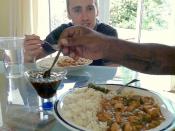In today's changing society, Australia is becoming more and more culturally pluralistic. This changes the dynamics of the classroom. No longer do all students only speak English - in fact some will speak English as their third, forth or fifth language. There is also a realm of different cultural practises in the class and some conflict with others. Dealing with this is not easy but it is worthwhile. Many teaching try to ignore that fact that there are culturally diverse students in their classroom but, as a result, they miss out widening both their minds and experiences and the minds and experiences of their students.
In the Classroom
When faced with a multicultural class, one of the first questions that needs to be asked is "how shall I arrange this class?" Some say to separate students with English as a second language while other say that they should be placed together.
In my experience, the wisest decision is to let them sit where they want until you know who they are and what they are like. Before choosing where they sit, you must know what country they come from, how much English they can speak, will they communicate with other students and if their race feuds with another. After doing this, one can then place then in a position that will suit their needs.
Groome's article on "Working purposefully with Aboriginal Students" gives some sound strategies on how to deal with Aboriginal students. However, when looked closely , it can seen how some of these strategies could also be beneficial to teaching people from any ethnic group. These strategies have been outlined below with brief summaries of each.
1.Recognise and meet identity needs
The identity needs of different cultures are diverse but are important to the children. It is...



Wow
I thought you did a great job. Very step to step and good transitions.
0 out of 1 people found this comment useful.